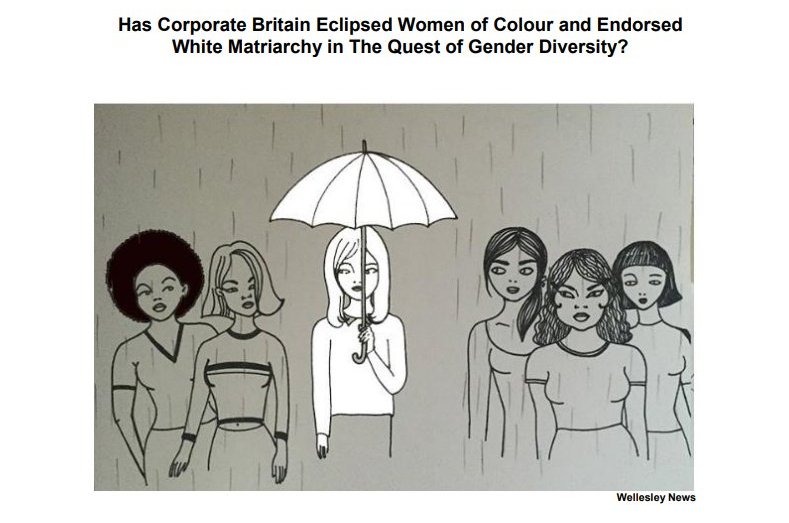Is Gender Diversity a White Matriarchy?

A new report titled, 'Has Corporate Britain Eclipsed Women of Colour and Endorsed White Matriarchy in The Quest of Gender Diversity?', is calling for the introduction of quotas. The report, written by Ahmed Olayinka Sule and Dr Margareth Rungarara Keenan, also calls for an Independent review and implementation of a new approach to gender diversity that factors the nuances of race.
Executive Summary (excerpt from the report)
In the past couple of years, there has been an urgency to rebalance the under-representation of women within corporate Britain. To redress this imbalance , a number of initiatives like the Hampton-Alexander Review , Women in Finance Charter and gender pay gap reporting have been implemented by the government and the private sector.
However, if one carries out a critical examination of the gains made in gender diversity, one will find out that these gains are asymmetrically distributed along racial lines. Women of colour in general and black women, in particular, have been left behind as white women grab the dividends emanating from gender diversity agitation. The gender issue is being embraced and perpetuated at the expense of women of colour. In short, the patriarchy prevalent in UK Inc is gradually morphing into a White Matriarchy.
The data we analysed clearly demonstrates that the women who hold positions of influence in the British corporate sector are predominately white. For instance, the latest City AM's Power 100 Women in the Square Mile reveals that 94% of the women on the list are white. The FTSE is not immune from this racial bias. Our analysis of the list of the 7 FTSE 100 women holding Chair roles revealed that they were all white. Of the 18 Female FTSE 100 Senior Independent Directors, 16 were white, 2 were Asians and there was no black female. The 25 female FTSE 100 executive directors were all white, while the FTSE 250 companies had 28 white female executive directors, 1 female Asian and no black female.
One-size-fits-all approach to diversity downplays racial diversity
We also examined organisations that promote gender diversity. The results confirm our original findings, that women of colour are under-represented. We also noted that the seminal reports addressing gender diversity in the UK corporate world were written, managed, reviewed and advised by white people.
Arguably, the failure to include race as a crucial factor in the gender diversity discourse has contributed to the disadvantage black women experience in corporate Britain. This could have been either consciously or unconsciously suppressed by proponents of gender ideologies, who seem to promote only issues raised by white middle-class women. Typically, in the agitation for gender equality in corporate Britain, there is a convergence of a hierarchy of participants. The current situation has seen white middle-class women take the preeminent position, followed by white men. On the contrary, black women have been relegated to the background as the invisible cast.
We noted that the government plays a role in creating a colour-blind gender equality framework by legislating a one-size-fits-all approach to diversity which downplays racial diversity. By ignoring race when addressing gender inequality, the power structure that is vacated by men is being substituted by white women relative to women of colour.
We call for the introduction of quotas, an Independent review and implementation of a new approach to gender diversity that factors the nuances of race.
Click here to download a copy of Has Corporate Britain Eclipsed Women of Colour and Endorsed White Matriarchy in The Quest of Gender Diversity? report




